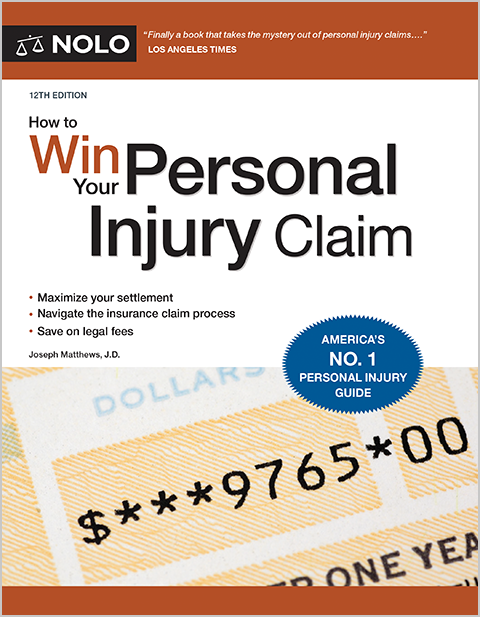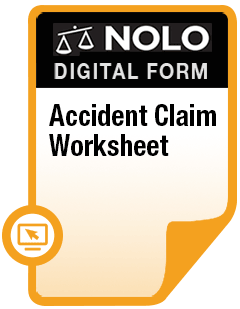You may be able to sue your child’s school and school employees, but it won’t be easy.
Many children are injured—intentionally and unintentionally—at school. During the school year, children spend far more of their waking hours in classrooms and playgrounds than anywhere else. The U.S. Consumer Product Safety Commission (CPSC) reports that over 206,700 children are injured on playgrounds each year.
If your child has been injured while at school or while participating in a school-related activity, here's what you need to know:
- Schools have a duty to keep children safe. If your child is hurt at school you may be able to file a lawsuit against the school and school employees like principals, teachers, counselors, and coaches.
- Your ability to sue a school depends on where you live and how your child was injured.
- Suing a public school is tricky. Public schools and other government agencies have sovereign immunity, which shields them from lawsuits. But lawmakers have carved out exceptions to this immunity and allow individuals to sue public schools and public school employees if they follow special rules. Rules vary from state to state.
- Private schools aren't protected by sovereign immunity, so there typically aren't special rules for suing a private school over a child's injury.
Let's take a look at some of the questions you'll have to answer to figure out who might be liable for your child's injury at school.
How Was the Child Injured?
Children can be injured at school in all kinds of ways. Common examples of the types of injuries that can lead to a lawsuit include:
- accidents on the playground
- sports-related injuries
- injuries caused by unsafe facilities and equipment
- bullying
- harassment, and
- physical and sexual abuse.
Accidental Injuries
Many students are injured at school by pure accident. A pure accident is an event that is unforeseen and unavoidable. You can't sue someone over a pure accident.
But when your child is injured because a school district fails to take reasonable steps to prevent an accident or fails to provide adequate supervision, you may be able to sue the school for negligence.
Intentional Injuries
Unfortunately, students are sometimes victims of intentional torts at school. Intentional torts are deliberate acts that cause harm, such as bullying, harassment, assault, and abuse by fellow students or school employees.
Schools have a duty to keep students safe. If school administrators fail to intervene and a student gets hurts parents may be able to file a lawsuit against the school. For example, when a student dies by suicide, some parents have filed lawsuits against school districts, administrators, counselors, and other professionals for failing to prevent harassment and bullying that may have led to the suicide.
If the student is intentionally harmed by a school employee, the school district may be liable for failing to conduct a proper background check and failing to adequately train and supervise that employee.
Was the School or a School Employee Negligent?
When children are at school, the school is supposed to meet the child's needs. Schools are responsible for providing shelter, food, transportation, and a generally safe environment. So what happens when they come up short?
If a school fails to follow accepted standards of care in providing services to a child, and a student is injured because of that failure, the school may be liable for negligence.
Let's look at a few examples of school negligence.
School Bus Accident
School bus accidents are rare, but they do happen. According to the National Safety Council (NSC), around 12,500 people were injured and 104 people died in school bus-related crashes in 2022. If your child is injured in a school bus accident, you may be able to sue one or more of the following parties:
- the bus driver if the driver is at fault for the accident
- the school district for failing to maintain the bus or failing to properly hire and train drivers
- the bus manufacturer if the accident was caused by a defective product, or
- anyone else who caused or contributed to the accident (like another driver, pedestrian, or cyclist).
Playground Injuries
Many children are injured on playgrounds by pure accident. But in some situations you may be able to sue one or more of the following parties over a playground injury:
- the teacher or school employee who provided negligent supervision
- the school district for failing to maintain the playground equipment
- the school district for failing to properly hire and train people to supervise the playground
- the manufacturers of playground equipment if the equipment was defective, or
- other students and their parents if your child was bullied, assaulted, or intentionally harmed in some way.
Slip and Fall
If your child slips and falls at school, you may be able to sue one or more of the following parties:
- the school district if the injury was caused by a dangerous condition on school grounds such as a loose handrail or an unmopped cafeteria floor
- the property owner if the school was leased, or
- a contractor if the injury was caused by a construction defect.
Exposure to Asbestos
Many school buildings are old. If your child was harmed by exposure to asbestos, you may be able to sue one or more of the following parties:
- the school district for failing to protect students from asbestos exposure
- the contractors and subcontractors who built the school, or
- asbestos manufacturers and others who contributed to the asbestos exposure in the school.
Sports Injuries
According to the NSC, about 3.7 million people were treated in emergency departments for sports injuries in 2023. If your child was injured while playing on a school sports team, you may be able to sue one or more of the following parties:
- the coach or athletic trainer for inadequate supervision
- the school district for failing to provide safe facilities and safe equipment
- the school district for failing to properly train and hire coaches
- the manufacturer of sports equipment if the equipment was defective, or
- other players and their teams and parents if the injury was intentional.
Bullying
Bullying in schools is more common than most parents think. According to stopbullying.gov, about 20% of students ages 12-18 experience bullying nationwide. If your child is harmed by bullying you may be able to sue one or more of the following parties:
- the school staff—principals, vice-principals, counselors, teachers—who failed to prevent and stop the bullying
- the school district that failed to establish effective anti-bullying policies, or
- the bullies and their parents directly.
Is the School Public or Private?
If your child attends a public school, the school is a governmental entity under state law. You have to follow strict rules, including filing an administrative claim first, before you can sue a public school. Rules vary from state to state. For example, in California, you must give written notice of your claim to the school district within six months of the date of the student's injury. The district will accept or reject the claim. If the claim is rejected, you can file a civil lawsuit.
Private schools aren't government entities, so there aren't usually special rules for filing a lawsuit over a student's injury at a private school. But if the school is run by a nonprofit organization or church, there might be some restrictions that shield the school from certain types of lawsuits.
Some private schools require parents to give up their right to sue and agree to arbitration to resolve disputes when they enroll their children in school. Depending on state law, courts may not find arbitration clauses like this binding when it comes to claims involving student injuries, but read your enrollment contract carefully and talk to a lawyer if you have questions.
Should I Talk to a Lawyer?
If you're thinking about suing a school, talk to a lawyer. This area of the law is complex and you can bet that the other side will be well represented by one or more lawyers. A lawyer who understands personal injury law and education law can help you evaluate the strengths of your case and decide whether it's worth pursuing. A lawyer can fight for you in court or help you negotiate a settlement.


